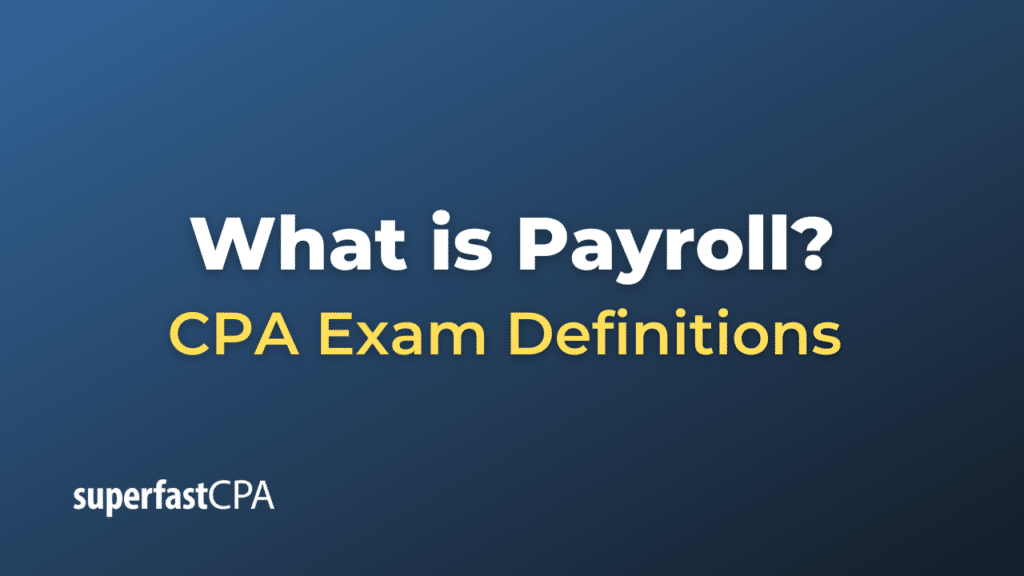Payroll
Payroll refers to the total amount of wages, salaries, bonuses, and deductions that a business pays to its employees over a specific period of time. It can also refer to the process of calculating and distributing these payments.
Payroll involves several tasks, such as:
- Tracking employee hours: Employers need to keep accurate records of how much time employees are working to calculate their pay accurately, especially for hourly employees.
- Calculating gross wages: This is determined based on an employee’s hourly wage or salary and the hours they worked during the pay period.
- Deducting taxes and other withholdings: Employers are responsible for withholding various taxes (like income tax, social security tax, and Medicare tax) from employees’ pay, as well as other deductions like health insurance premiums or retirement plan contributions.
- Paying employees: This could be through direct deposit, paper check, or another form of payment.
- Reporting and paying payroll taxes: Employers must report payroll information to the government and pay their portion of payroll taxes.
Payroll is a critical function in a business because it’s how employees get paid, and errors can lead to serious consequences, including legal issues. Many businesses use payroll software or hire a payroll service provider to ensure this process is handled accurately and efficiently.
Example of Payroll
Let’s take an example of a small business owner named Jane who runs a bookstore and employs 3 people.
- Jane tracks each employee’s working hours. In one pay period, two of her employees worked 80 hours each, while one worked 60 hours.
- All employees earn $15 per hour. Jane calculates the gross wages as follows:
Employee 1: 80 hours x $15/hour = $1200
Employee 2: 80 hours x $15/hour = $1200
Employee 3: 60 hours x $15/hour = $900 - Jane then calculates taxes and deductions. For simplicity, let’s say there is a 15% tax rate and each employee has a $50 health insurance premium deduction.
Employee 1: $1200 x 15% = $180 in taxes, $1200 – $180 (tax) – $50 (insurance) = $970
Employee 2: $1200 x 15% = $180 in taxes, $1200 – $180 (tax) – $50 (insurance) = $970
Employee 3: $900 x 15% = $135 in taxes, $900 – $135 (tax) – $50 (insurance) = $715 - Jane pays each employee their net wage.
Employee 1: $970
Employee 2: $970
Employee 3: $715 - Jane also needs to calculate and pay the employer portion of the payroll taxes, which varies depending on location and other factors. She submits all necessary reports to the government.
This is a simplified example and doesn’t include every potential deduction or tax that could be involved in payroll, but it gives you an idea of what the payroll process looks like. In reality, Jane might use payroll software or hire a payroll service to manage these tasks.













